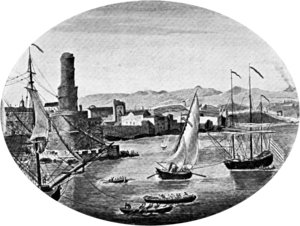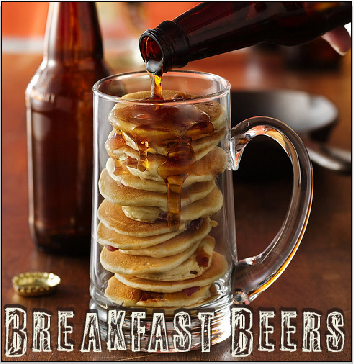The Belmont Stakes are perhaps the most democratic of the Triple Crown Races even though it is held Elmont right next to Queens. Indications of that are they can’t settle on a song or a drink. The song has ranged from Sidewalks of New York, a charming Tin Pan Alley tune better known as East Side, West Side, to the Theme from New York, New York (as performed by Frank Sinatra and appropriated as the Yankees anthem and not the original Liza Minelli rendition), to 2010’s Empire State of Mind by Jay-Z.
This year they are returning to Sidewalks of New York, hoping it will bring back some Triple Crown luck.
Likewise the drink has changed from the absolutely un-potable White Carnation to the refined trashcan punch that is the Belmont Breeze.
I suggest instead the classic Cosmopolitan.
Ingredients-
Directions Fill a cocktail shaker with ice. Add the vodka, Cointreau, and cranberry and lime juices. Cover and shake vigorously to combine and chill. Strain the cosmopolitan into a chilled martini glass. Twist the orange zest over the drink and serve. Note: The drink can also be stirred in a pitcher. |
This year is the 146th running and for once we have the possibility of a Triple Crown. While the past 36 years are littered with failure I’d argue that at least as many hopes have been dashed at Pimlico as at Belmont.
Hard Lessons From Belmont
By ERIC BANKS, The New York Times
JUNE 6, 2014
Though I welcome the fair-weather fans, few appreciate just how hard it is to sweep the Triple Crown. After prevailing in the Kentucky Derby, a horse that goes on to win the Preakness is often a victor by attrition, as the tougher challengers, no longer having a shot at the Triple Crown, frequently skip the second leg in the series to better prepare for the Belmont Stakes. Three weeks later, the Belmont’s acid test – a long distance over the racetrack’s unusual and tiring sandy surface, facing a slew of well-rested adversaries – usually exposes the champ’s flaws.
It’s ironic that the Belmont Stakes is able to generate a crowd (and betting handle) as large as the one it will see on Saturday only by dangling the prospect of a Triple Crown – which is likely to send its customers home disappointed.
I hope I’m all wrong about California Chrome. Every strand of his narrative is appealing, from his unlikely pair of regular-guy owners to the magical training job done by his 77-year-old conditioner. A Triple Crown sweep would also be a fitting send-off to the track announcer and Belmont legend Tom Durkin, the longtime voice of New York racing who is retiring in August. If you love the sport, despite its doping scandals and episodes of callous, even cruel treatment of animals, you can’t but hope that the 120,000 spectators who are anticipated at Belmont Park will be treated to a perfect Cinderella – or Seabiscuit – ending.
But horse racing hasn’t been a hopeful sport in some time. I’m content to wish the gallant horse good luck from a distance and take the slim prospect of celebrating far away from the track in exchange for the likelihood of familiar disappointment in person. With the Triple Crown, it just seems like the sporting thing to do.
History of Failure (all from The New York Times)
- Triple Crown Bid Is a Long-Awaited Anniversary Gift
- The Triple Crown Eleven (photos)
- 12 Belmont Stakes Contenders Who Just Missed Out on a Triple Crown
- A Bonus California Chrome Can’t Win
Still, Eric does identify many of the problems a potential Triple Crown Winner faces. First of all the distance. At 1 1/2 miles the Belmont is the longest of the Triple Crown races and comes hard on the heels of the sprint at Pimlico.
Pushing to Change the Triple Crown’s Grueling Schedule
By TOM PEDULLA, The New York Times
MAY 30, 2014
Stuart Janney III, the vice chairman of the Jockey Club and a member of the New York Racing Association’s board, is joining Tom Chuckas, the president of the Maryland Jockey Club, in calling for the Kentucky Derby, the Preakness Stakes and the Belmont Stakes to be spread out over three months. Janney said there was a groundswell of support from owners and trainers for a potential scheduling change, which is already stirring intense debate.
…
The spacing and order of the races has not always been the same. The Preakness was run before the Derby 11 times, for instance. In 1917 and 1922, they were held the same day. Sir Barton was recognized as the first Triple Crown champion in 1919.
…
Only two starters from the 19-horse Derby field joined California Chrome in the Preakness. Art Sherman, the 77-year-old trainer of California Chrome, expressed how uncomfortable he was with the turnaround, saying most horses require at least 10 days to recover from a race. Todd Pletcher, a top trainer who regularly claims a deep roster of 3-year-olds, started four horses in the Derby. He skipped the Preakness for the third consecutive year.“The philosophy of the trainers has drastically changed over the years,” Chuckas said. “It is hard for them to bring a horse back from the Derby in two weeks and run a horse three times in a five-week period. Most of them will not do it.”
Recent history suggests the tightly bunched spring classics can take a toll on young horses that are still developing physically and mentally. Big Brown, the last horse to start in the Belmont Stakes after sweeping the first two legs, in 2008, was so thoroughly defeated that his jockey, Kent Desormeaux, eased him in the stretch. Although I’ll Have Another looked impressive in taking the Derby and the Preakness two years ago, he was scratched on the eve of the Belmont with a career-ending leg injury.
And indeed it is so, this year’s number one contender, Comanding Curve, has been on vacation.
In the Belmont Stakes, a Rested Commanding Curve
By TOM PEDULLA, The New York Times
JUNE 5, 2014
“I had never experienced the pure jubilation of running so well in the Kentucky Derby,” Finley said. “The first thing that happens is you have people talking about going to the Preakness right away, and you get caught up in the talk.”
Forty-eight hours after the race, the calculating former military man was back in charge.
“When I met with my team, we really felt very strongly the Preakness would not suit our strengths,” Finley said. “We didn’t really have the pressure of going on to the Preakness, not having the Derby winner.” The trainer Dallas Stewart agreed.
…
Stewart said the rest and the longer distance in the one-and-one-half-mile Belmont may allow his horse to deny California Chrome, who fended off Ride On Curlin by one-and-a-half lengths in the Preakness.“The best scenario would be to just catch him at the eighth pole and let them fight it out,” Steward said. “It would be a dream to see them fight it out in the stretch.”
Commanding Curve also benefited from remaining at Churchill Downs, his home base, after the Derby. He produced two strong workouts there before being shipped to Belmont Park, where he turned in another sharp four-furlong drill Sunday. He worked in the company of Cost Effective, another West Point horse, and bested him by one length in blazing four furlongs in 47.38 seconds. The workout ranked third of 25 at the distance on a fast track.
It appeared to be the latest evidence that staying on the sideline was wise.
Also the Belmont track surface is looser, sandier, and harder to run on tran most tracks in the country.
The Complex Battle to Achieve the Perfect Dirt
By MELISSA HOPPERT, The New York Times
JUNE 5, 2014
Grading, watering and an assortment of other procedures are necessary to keep the track, which is known as the Big Sandy, in uniform shape. It is a constant battle for the small army charged with its caretaking, and it goes on whether the day’s card is made up of modest claiming and allowance races, as it often is, or loaded with prestigious million-dollar races, as it will be on Saturday, when California Chrome takes aim at the Triple Crown in the Belmont Stakes.
…
Belmont’s racetrack is considered different not just because of its size but also because of its racing surface, which is a combination of sand, clay and silt. Still, the Big Sandy moniker may actually be a misnomer.“There’s an impression that it’s a lot different, but the numbers really don’t show it as being dramatically different from the other tracks,” said Peterson, a professor at the University of Maine whose researchers routinely gather data on the surface. “It’s a little sandier, but it’s not that big a change.”
He added: “The biggest difference on racetracks, which is much more important than the sand or the surface composition, is the moisture. And one of the things that makes Belmont quite a bit different is the time of year when they’re racing and how they maintain that.” In other words, Belmont is a spring, summer and early fall track, which means thunderstorms, among other things, are a familiar factor.
One factor he fails to consider is that the NYRA is much stricter about “performance enhancement” than most racing associations.
Debating the Possibility of Winning by a Nose Patch
By TOM PEDULLA, The New York Times
JUNE 5, 2014
The owners, Perry Martin and Steven Coburn, asked the trainer Art Sherman to add the strip after California Chrome started slowly and finished poorly, running sixth among nine starters, in a one-mile stakes race limited to California-breds last Nov. 1 at Santa Anita Park. They also changed jockeys after their fourth defeat in six races. Victor Espinoza, who swept the Kentucky Derby and the Preakness Stakes aboard War Emblem in 2002, replaced Alberto Delgado.
With those changes, California Chrome rattled off six consecutive victories by a combined 27 ½ lengths. His convincing efforts in the Derby and the Preakness have put him one victory from the Triple Crown.
Martin and Coburn think enough of the nasal strip that Sherman suggested the day after the Preakness victory that California Chrome might not be run in the Belmont if the New York State Gaming Commission did not lift its ban on the nonmedicated, 4-by-6-inch adhesive patch. The commission obliged the next day, citing the opinion of Scott Palmer, its equine medical director.
“Equine nasal strips do not enhance equine performance nor do they pose a risk to equine health and safety, and as such do not need to be regulated,” Palmer said in a statement released May 19 by the New York Racing Association.
Still, a lot of horses have failed or been pulled because they can’t use their favorite meds in New York State.
Performance Enhancing Drugs (all from The New York Times)
It is a compelling human (and horse) interest story from California Chrome himself who was picked up for a song because he looked like a runt and his breeding was unimpressive, to the owners who, if not exactly middle class (you don’t own race horses if you’re middle class), are at least not as obnoxiously wealthy as most of their peers, to the trainer with one last shot at the Triple Crown.
Human Interest (all from The New York Times)
- California Chrome’s Quest for the Triple Crown, and the Lives He Transformed
- California Chrome’s Crew
- Two Horses, 59 Years Apart, Inspire One Trainer
- In a Father’s Footsteps, Chasing a Triple Crown
- One Last Shot for the Voice of Racing
- The Race Not Run
Hey, at least he wasn’t turned into chevaux.
So you want to know who will win? Your guess is as good as mine.
Handicapping (all from The New York Times)
- An Impressive Workout by California Chrome Electrifies Belmont Park
- Underdog Seeks Jump From Second to Spoiler
- Decent Draw and Rising Hopes for California Chrome
- Breaking Down a Bid for History at the Belmont Stakes
- What Experts Say About the Belmont Stakes
And how are New Yorkers reacting to the hype? Well, the usual mix of insouciance and disdain with a side of suppressed excitement and anticipation.
- And … They’re Off (Fingers Crossed)
- Belmont Park Braces for a Triple Crown Crowd
- Favorite for Triple Crown Inspires a Run on Betting Tickets
- At Belmont Park, Savoring the Other Sides of the Track
- A Belmont Who Fought for Racing and for Soldiers
- Wanting to Believe in California Chrome
- Many Bettors at a Loss Since the OTBs Closed
Coverage has started on NBC and now we’ll have an hour and a half of hype. Post time is 6:52 pm with pre-race setup starting at 6.


 Port Royal provided a safe harbour initially for privateers and subsequently for pirates plying the shipping lanes to and from Spain and Panama. Buccaneers found Port Royal appealing for several reasons. Its proximity to trade routes allowed them easy access to prey, but the most important advantage was the port’s proximity to several of the only safe passages or straits giving access to the Spanish Main from the Atlantic. The harbour was large enough to accommodate their ships and provided a place to careen and repair these vessels. It was also ideally situated for launching raids on Spanish settlements. From Port Royal, Henry Morgan attacked Panama, Portobello, and Maracaibo. Roche Brasiliano, John Davis (buccaneer), and Edward Mansveldt (Mansfield) also came to Port Royal.
Port Royal provided a safe harbour initially for privateers and subsequently for pirates plying the shipping lanes to and from Spain and Panama. Buccaneers found Port Royal appealing for several reasons. Its proximity to trade routes allowed them easy access to prey, but the most important advantage was the port’s proximity to several of the only safe passages or straits giving access to the Spanish Main from the Atlantic. The harbour was large enough to accommodate their ships and provided a place to careen and repair these vessels. It was also ideally situated for launching raids on Spanish settlements. From Port Royal, Henry Morgan attacked Panama, Portobello, and Maracaibo. Roche Brasiliano, John Davis (buccaneer), and Edward Mansveldt (Mansfield) also came to Port Royal.


 Welcome to the
Welcome to the 
 Sometimes satire fails. Even if you are Stephen Colbert, satire can fail.
Sometimes satire fails. Even if you are Stephen Colbert, satire can fail.